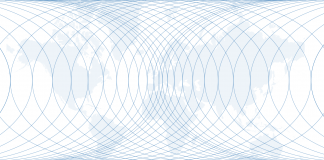Last week my friend and colleague, Jacek Bartosiak, wrote a piece for GPF titled “The Scalable World War Ahead,” in which he warned that the world is descending into the abyss of near-global war. The most important argument he made was that there was a new dynamic in the world in which wars will grow as a cancer, with cells dividing until the world is fully consumed.
I disagree with what I will call the theory of war as metastasis generally, and particularly in our time. Wars occur between nation-states, rising from the particular interests of each nation-state. In general, wars originate from fear or greed. A nation calculates that the threat from another nation is best met by preemptive action. This occurs in the particular circumstance in which a nation fears what another nation will become, and risks war on the assumption that going to war will prevent the rise of another nation. The fear could be of the not-yet-harnessed power of the opponent or the possibility of the power of an ally. War can also arise from greed, or the desire to acquire something of strategic value from another nation – in which case the calculation of power assigns a probability of success on the nation initiating the war.
The decision to go to war is initiated by one party that tends to want to avoid an expansion of the war, or will at least wait until the first war is settled before expanding the war and increasing the chance of failure. The defending country tends to seek allies, if the attacker’s calculation of relative power is correct. The cost of alliance is normally high, and the desire to intervene exists only under particular circumstances. Cascading wars are thus possible but not likely. In this sense, most wars are self-limiting.
In retrospect, World War II appears to be a cascading war, but it was so only in a limited sense. There were two separate wars, one in the Pacific and one in Europe. The former did not cascade. The participants at the beginning defined the war until its end. In Europe, the war was really two wars, both involving Germany. One was Germany against the Anglo-French alliance, the other against the Soviet alliance. Neither the Pacific nor the European war metastasized far beyond the core powers.
Get the Geopolitical Futures FREE newsletter
The Cold War pitted NATO against the Warsaw Pact, and it had a distinctly nuclear flavor. The Cold War in Europe never turned into war because nuclear weapons increased the potential cost of war enormously. The war did spread to parts of Asia, Africa and Latin America, but these were non-critical conflicts for both sides.
One of the limiters of war involving major powers is the fact that most have nuclear weapons. A war between China and the United States would be possible only if one side were confident it could neutralize the other’s weapons. Absent that, the danger would be in winning the war. In extremis, where the nation’s fundamental interests were threatened by conventional forces, the nation might choose a nuclear option. The potential winner would have to assume that a nuclear response is possible, and would have to calculate whether the potential risks of victory would be worth the prize. Pre-nuclear limits on cascading wars would have a nuclear response added to the equation. Notably, the notion of tactical nuclear weapons creates the illusion of utility. The most widely available tactical nuclear weapons have a lethality of a large fraction of the bombs that destroyed Hiroshima. There are smaller ones, but they are either so small as to not justify their use relative to conventional weapons or sufficiently devastating to make a large city uninhabitable.
War is possible between nuclear powers when at least one is acting through proxies able to carry the battle. Vietnam is a classic example. North Vietnam and the United States clashed with each other, with China and the Soviet Union providing logistical support. The U.S. never seriously considered the use of nuclear weapons in the confrontation. Nor did Israel in 1973 when it was attacked by Egypt. The Cuban missile crisis never really came close to nuclear exchange, as the release of papers and tapes by both sides shows. In Ukraine, Russia has threatened a nuclear strike. However, as in Vietnam, one side is conducting direct warfare, while the other is acting by proxy. Nothing is significant enough on either side to risk a nuclear exchange.
The situation between China and the United States is similarly limited. Neither nation has any interest worth a nuclear exchange, and neither side is certain what the other might do if facing an extreme risk of defeat. We have seen endless maneuvering and rhetoric from both sides, but at the moment the uncertainties involved in risking a conventional war are intact. Neither side is confident enough in its position in initiating combat, and neither is certain whether nuclear weapons might be used if it were winning a conventional war. Being almost certain is not the basis for rising national annihilation.
From my point of view, we see in Ukraine a classic uncertainty on both sides as the war progresses. In the Western Pacific, we have had many years of saber-rattling but little action. China is in the throes of a financial crisis that cannot be solved by engaging its largest customer and major investor in war. The U.S. has no desire to change the status quo.
There are, my mind, too many obstacles to a cascading war. The closest to a cascading war we have seen was World War II, but even then the participants were fairly stable after the war started. In the Cold War, the center never destabilized, the smaller skirmishes elsewhere notwithstanding. Cascading wars may happen over decades and with intervening political agreements. There will always be wars, and some will be terrible. But there are too many breakers to allow for cascades.






